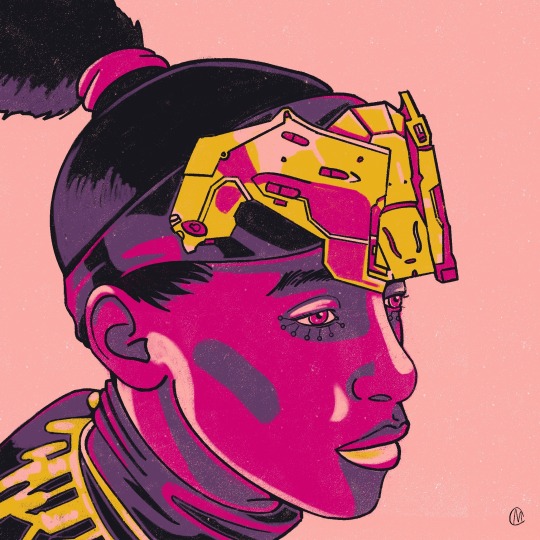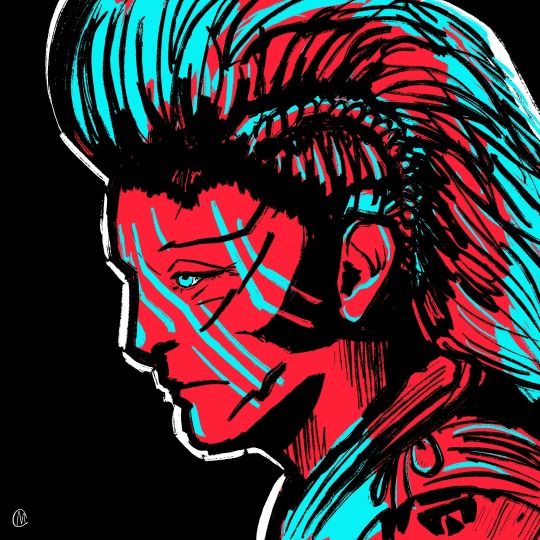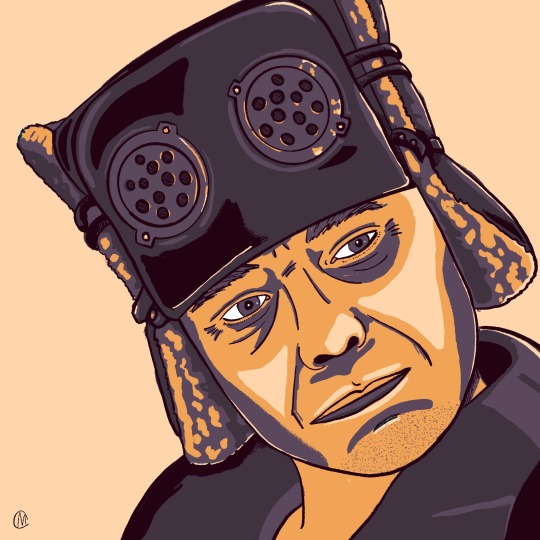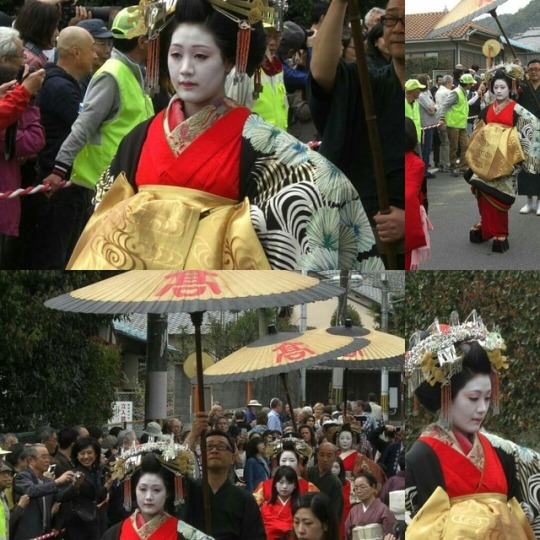#rokomo
Text










Ten characters, ten color palettes 🎨
#horizon forbidden west#hfw#horizon burning shores#horizon zero dawn#hzd#aloy#alva#gildun#zo#seyka#dekka#rokomo#vanasha#varl#erend
346 notes
·
View notes
Text
Spirit Tracks Translation Comparison: The Lokomo

This will be a comparison of the original Japanese version and the US English localized version.
Specifically, this will cover the cutscene in which Anjean tells Link and Zelda about the Lokomo people, and how they should proceed.
You can also watch this cutscene for yourself in English and Japanese. If you want, you can check out the EU English version, too.
For the comparison, the usual points apply:
Bolded is the original Japanese text, for the reference.
Bolded and italicized is my translation.
Italicized is the official NOA translation.
A (number) indicates that I have a specific comment to make on that part in the translation notes.
As you read this, please keep in mind that with translations like these, it’s important not to focus on the exact literal wordings, since there is no single “correct answer” when it comes to translations.
Rather than that, consider the actual information that is being conveyed, in which way, and why.
--
Characters in this part who had their names changed between versions:
Sharin = Anjean, Valve = Gage
--
Returning to Anjean:
Anjean:
おぉ 見事 石版をとって
こられたようじゃの!
Oh, good job! Looks like
you got the lithograph!
Ah, so you managed to
obtain the rail map!
Anjean:
お主らなら 本当に
各地の神殿の結界を
はりなおせるかもしれんの!
You two might really have
what it takes to fix the barrier
of all the temples! (1)
You two just might be able
to restore the Spirit Tracks
in every realm!
Zelda:
しかし 石版には
少ししか線路が
描かれていませんでした
But, the lithograph seems
to only have a few tracks
etched into it.
But, Anjean, the rail map
has only a small part of the
Spirit Tracks on it.
Zelda:
神殿とはどこに
あるのですか?
Where exactly
are the temples?
Where are the temples you
were talking about?
Anjean:
結界の役目を担う神殿は
4つあるのじゃ! そして ここから
一番近い神殿はここじゃが…[DS]
There are four temples in charge
of the barrier! And the closest
of them is right here, but... [DS]
In each of the four realms
is a temple. Look, my dear.
The closest one is here...[DS]
Anjean:
確かにこのままでは
神殿にはたどりつけんな
You definitely can't reach that
temple the way things are now.
But I don't think you can
make it to the temple
as things are right now.
Anjean:
この石版は フォースの力で
線路を表しておるんじゃ
The lithograph shows the tracks
with the power of Force. (2)
The rail map has imparted
energy to a length of the
Spirit Tracks here.
Anjean:
魔物の力によって 石版に
蓄えられた フォースまで
なくなってしまったようじゃ
The power of the monsters
seems to have stripped the lithograph
of the Force stored inside it, too.
But because of the Demon
King's power, much of the
energy was lost.
Zelda:
そんな… 神殿に
行くことはできないのですか?
Oh no... Does that mean
we cannot go to the temples?
So...we can't go to the
temples, Anjean?
Anjean:
方法はないわけではない…
石版にフォースの力を宿すには…
わしの一族のものに会い
この石版にフォースの力を
増幅してもらうのじゃ
It's not like there's no way to do it...
To fill up this lithograph with Force...
You have to meet with one
of my people, and recharge
the Force inside of it. (3)
Not yet. But there is a
way to restore energy to
the rail maps.
You can ask my people to
help you.
Zelda:
シャリンさまの一族の方…
そのような方が
おられるのですか?
Someone of your people...
You mean there are people
like you, Lady Sharin?
Your people, Anjean?
Anjean:
うむ わしら ロコモ族は代々
神のお作りになった結界と
神殿を守る命を授かった
天界に近き一族なのじゃ
Indeed, we Lokomo are a people close
to the heavens, given order to protect the barrier (4)
and the temples created by God,
and have done so for generations.
Indeed. We are called the
Lokomos. We are servants
of the spirits.
They have entrusted us
with protecting the temples
and the Spirit Tracks.
Anjean:
わしらは 聖なる楽器を
あやつって石版にフォースの力を
宿す力を持っておる
We have the power to fill
the lithographs with Force,
by playing sacred instruments.
By playing our sacred
instruments...
We generate energy that
powers the Spirit Tracks.
Zelda:
楽器…ですか?
Instruments...?
Sacred instruments?
Anjean:
そう お主の持っておる
「大地の笛」も その1つじゃ
Yes, and the "Flute of the Land"
that you possess is one of them, too.
Yes, and the Spirit Flute
you hold is one of them.
Zelda:
わたしの笛が…!
これは お母さまから
いただいたものだったのですが..
My flute...!
It was given to me
by my mother, but...
This flute was a gift from
my grandmother. I didn't
know it had any powers.
Zelda:
ご先祖さまから 伝わる大事な
笛だと 伺いました
I have been told that it was a special flute,
handed down from my ancestor.
I'd only heard that it was
something precious handed
down from my ancestors.
Anjean:
わしが おぬしの
先祖にあたる者に
渡した物じゃ!
I’m the one who
gave it to that
ancestor of yours!
Yes! And it was I who gave
it to your ancestors!
Anjean:
何度もくれとせがまれたので
この国の平和を築くという
条件であげたのじゃ
She kept bugging me about it,
so I gave it to her, under the condition
that she would keep this country peaceful.
But only under the
condition that they protect
the land for all time.
Anjean:
その時はこんな一大事に
なるとは思ってなかったが…
At the time I didn't think things
would end up getting this bad, though...
Of course, back then, I
didn't think things would
take such a perilous turn.
Anjean:
まあ 持ってたのが
おぬしらで よかった…
Well, I'm glad you're
the ones who have it...
I'm glad that after all these
years it has found its way
into your hands.
Zelda:
この笛 そんな大事なもの
だったのですか..
I had no idea this flute was
so important...
I had no idea this flute was
so important...
Zelda:
私が小さい時に お母さまが
よく吹いてくださいました
When I was little, my mother
would often play it for me.
My grandmother used to
play it for me when I was
a little girl.
Zelda:
この音色を聞くと
いやなことがあっても
がんばれるような気がして…
When I listen to its sound,
I feel like I can keep going,
even when things are unpleasant...
If I was sad or upset, the
sound of this flute would
make me feel better.
Zelda:
でも お返しした方が
よさそうですね
But I suppose it would be for
the best if I returned it to you.
But even so, I suppose its
rightful place is with you,
Anjean.
Anjean:
いや それは きっと必要になる
おぬしらが 持っていた方がよい!
No, you'll definitely need it,
so it's better if you have it!
No, you two will have need
of it. Please take it with
you! For now...
Anjean:
それよりも 今はわしの一族に
会い 石版に再びフォースの
力が宿るようにするのじゃ
More importantly, right now
you need to meet with my people
and fill the lithographs with Force again.
You must go find the other
Lokomos and restore the
energy of the rail maps.
Anjean:
そうすれば 線路が再び
浮かび上がるはずじゃ
If you do that, the tracks
should emerge once more.
Once you do, the Spirit
Tracks will reappear.
Anjean:
まずは森に行き 森のロコモ族
バルブという男に会いなさい
First, I want you to go to the forest and meet
with a man called Valve, the Lokomo of the Forest. (5)
Go to the forest first,
where you must talk to the
Lokomo Gage.
Anjean:
[DS] この塔より 南西の方に
バルブの住む ホコラがある
[DS] The shrine where Valve lives
lies southwest of this tower.
[DS] South of the Forest
Temple is a sanctuary
where you can find Gage.
Anjean:
きっと おぬしらの 進むべき道を
示してくれるはずじゃ
He should be able to show
you where to go.
He will be able to tell you
where to go next.
Zelda:
はい わかりました!
Alright, understood!
Got it!
Zelda:
リンク
いきましょう!
We should get going,
Link!
Let's go, Link!
Zelda:
あ…でも 今は機関車が
ありませんし どうやって
森まで いけば…
Oh, but... we do not have
a train right now. How are we
supposed to reach the forest...?
Oh...but we don't have a
train. How are we going to
get to the forest?
Anjean:
これに 乗っておいき
Use this.
You may take this.
Anjean:
この汽車は いにしえの時代に
神が お使いになった
神の汽車じゃ…
おいそれと 普通の人間が乗れる
ものじゃないんじゃが…
今はそんな事も言ってられんし
それに お主らなら 神もお許しに
なるじゃろうて!
This train was used by God
in the ancient times.
The Train of God...
Ordinary humans aren't supposed
to just ride it around like that, but...
We don't have much of a choice right now.
And I'm sure God will make an exception
in your case!
This train is a symbol of
the spirits. People don't
ordinarily ride around in it.
But these are no ordinary
circumstances.
I'm sure the spirits wouldn't
mind lending it to you.
Zelda:
ありがとう シャリンさま!!
Thank you, Lady Sharin!!
Thank you, Anjean!
Translation Notes:
I realize it’s worded a bit awkwardly when translated as literally as I did, but by ”the barrier of all the temples”, Anjean basically means “the barrier that’s being created by all the temples”.
“Force” is a concept that occasionally comes up in Zelda games. Not to be confused with the Triforce, “Force” is an energy that dwells within all living beings and the world. In the English localizations, it’s usually adapted as Force Gems when it’s shown in crystalized form, or even just energy or life force when it’s not physically shown.
What I translated as “people” here is 一族/ichizoku in Japanese, which could also be translated as “clan” or even “family”, but I think “my people” worked best in this context.
The Lokomo are literally called ロコモ族/Rokomo-zoku in Japanese, named after “locomotive”, so one could romanize them as “Locomo”, too.
What I translated as “the Lokomo of the Forest“ could also be translated as “a Lokomo of the forest”, but he does seem to be specifically assigned to the forest, so the former made sense to me.
--
Comparisons & Thoughts:
This is only a short scene, but it features some important exposition, and some particularly curious changes in the English version.
-
I will start with what I consider the biggest change in this scene.
In the Japanese version, Zelda states that her flute was given to her by her mother, while the English version has her state that it was her grandmother.
This seems like a strange and unnecessary change, but I have a theory about why they did it.
I think whoever decided on this change might have wanted to imply that Zelda’s grandmother was actually Tetra, and thus that Zelda knew Tetra personally, and got the flute from her.
This might also explain why the English version didn’t mention that Zelda is specifically the great-great-grandchild of Tetra in an earlier scene.
As for why they would do this, I’d assume it would be because Tetra is a popular character, and they thought it would be better to have a closer connection with her?
But even if we assume that wasn’t their intention at all, and they just changed it to her grandmother for a completely different reason, this change certainly made many English-speaking fans believe that Tetra was Zelda’s grandmother.
So it definitely caused a misconception in the fandom.
But regardless of that, in the Japanese version of the story, it’s made clear that Zelda did not know Tetra personally, which is why part of her relationship with Anjean involves Zelda indirectly learning things about Tetra through her.
Now, one may prefer the idea of Zelda having known Tetra personally, and that’s understandable. But it would still be a change from how it was in the original Japanese version.
-
Related to the above, as Anjean and Zelda actually talk about Tetra here, she is simply referred to as Zelda’s ancestor.
As I mentioned previously, this is pretty much always what Tetra is referred to as throughout the story, being a recurring plot point.
In earlier scenes where she was mentioned, the English version correctly adapted this as “ancestor”, but in this cutscene here they instead go for the more generalized “ancestors”, which muddles the fact that this was specifically meant to be Tetra.
If they really did intent to change it so Tetra was Zelda’s grandmother instead, they might have done this to support that rewrite. But this would also make it inconsistent with the prior scenes.
Whatever the case may be, the English version will continue to use “ancestors” in future scenes as well, thus removing the recurring references to Tetra that are a part of the story in the Japanese version.
-
Still on that same topic, an especially notable difference in Anjean’s dialogue here is this:
She kept bugging me about it,
so I gave it to her, under the condition
that she would keep this country peaceful.
But only under the
condition that they protect
the land for all time.
In the Japanese version, where Anjean is more explicitly talking about Tetra, she also goes into more detail about why and how she ended up giving her the flute.
This is another one of the kinds of details I miss, since it gave us another small look into these characters and their relationship.
Just like in her first appearance, Anjean is talking about Tetra in a way that could almost come across as dismissive, but we can also tell from her general mannerisms that she was actually friendly with her.
For me, it gives off this impression that Anjean and Tetra were probably the kind of friends that might tease each other, or even come across as harsh, but really are good friends at the end of the day.
Either way, in addition to making most references to Tetra more vague, the English version also lacks these small insights into her interactions with Anjean.
-
Going back to the beginning of the scene now, the Japanese version has Anjean specifically state: “There are four temples in charge of the barrier!”
The English version instead has her say: “In each of the four realms is a temple.”
This change was probably made since “the barrier” has been written out, but it technically creates a small error here.
If you consider the Sand Realm its own realm, there would be five realms, not four. And even if you don’t, that would mean there are two temples in the Ocean Realm.
The phrasing in the Japanese version in turn actually leaves the possibility open for there to be other temples that aren’t related to the barrier, which we later learn is the case.
-
In the Japanese version, the lithographs specifically need “Force” to work, while the English version just refers to it as “energy”.
I talked about Force a bit in the translation notes already, and like I mentioned there, it’s supposed to be an energy that dwells within all living beings, and so forth.
It’s a recurring element in Japanese Zelda games, but the English localizations don’t always adapt it the same way, making the concept more obscure.
For example, the items called “Force Gems” that appear later in Spirit Tracks are also simply called “Force” in Japanese, and the “life force” mentioned in Phantom Hourglass was also originally called “Force”.
Even the Sands of Hours from that game are supposed to be made out of Force.
I’m guessing the English version changed “Force” to “energy” here because the general concept of Force isn’t as prominent in English Zelda games, so it might just be confusing if it was mentioned here without context.
Adding to this, the English version also says that the energy was lost because of “the Demon King’s power”, rather than “the power of the monsters”, which is probably also to simplify the idea?
-
Anjean’s explanation of the Lokomo features some minor differences, aside from the already familiar changes like “God” to “spirits” and mentions of “the barrier” being replaced with “the Spirit Tracks”.
In the Japanese version, Anjean says that the Lokomo are “close to the heavens”, which the English version leaves out, possibly due to religious implications?
Strangely though, the English version does allow Anjean to mention “the heavens” later in the story.
Perhaps there was a limit to how many times they could mention these things? That’s my best guess, assuming it’s not just a result of different writers working on different parts.
Anjean also mentions that the Lokomo have been performing their divine task “for generations”, which isn’t mentioned in English.
This is crucial information if one wishes to figure out the general timing of this game’s story, as this means the initial defeat and sealing of the Demon King Malladus occurred multiple Lokomo generations ago.
Since Lokomo live a lot longer than humans, this must have been a timeframe of at least several centuries.
Also, as a bit of trivia, the English version of this game uses “Lokomos” as the plural for Lokomo, but the English version of The Legend of Zelda: Encyclopedia uses “Lokomo” as the plural instead.
I personally prefer the latter, which is why I go with that as well.
-
Seemingly minor difference, but look at this line from Zelda here:
When I listen to its sound,
I feel like I can keep going,
even when things are unpleasant…
If I was sad or upset, the
sound of this flute would
make me feel better.
The English version treats Zelda being cheered up by the flute’s sound like it’s something from her past, presumably when it was being played for her as a child.
But the phrasing in the Japanese version implies this is something that is still true today.
And if you think back, you may recall that in an earlier scene, we do see Zelda playing the flute by herself in her room, as she waits for Link to answer her request.
So the implication here might be that in the present day, Zelda still plays the flute on her own, in order to cheer herself up or calm herself down.
-
Anjean’s directions are slightly different between versions.
In Japanese she directs the children to “southwest of this tower“, and in English to “South of the Forest Temple“.
Both lead to the same place of course, but I think the English version changed it since just “south” might be easier to remember than “southwest”?
Story content aside, another factor to consider during localization is making sure the text is easy to understand for the player from a gameplay perspective.
-
All in all, the localization in this cutscene is another pretty faithful one.
Most of the changes are just the same general ones that appear constantly, like “the barrier” being written out.
You can tell Anjean is a bit more serious in English, like I mentioned before, but the content of what she actually says is generally the same, too.
The biggest difference is the way the references to Tetra are handled here, especially since the localization was a lot more accurate about it previously.
And again, I can’t say for sure if changing Zelda’s mother to her grandmother in English was also an intentional rewrite to make it seem like it was Tetra. But as I said, it did make many fans believe it really was Tetra.
And references to Tetra really do suffer quite a bit in this localization, I’m afraid to say. Both due to the reasons I have already gone over, and more that’s to come.
This scene is just another part of that larger issue, but I think it’s where it really starts.
But that’s the end of this part right here. Feel free to check out the next one!
--
< Previous Part | Start | Next Part >
--
#legend of zelda#the legend of zelda#tloz#spirit tracks#legend of zelda spirit tracks#legend of zelda translations#spirit tracks translations#my translations#spirit tracks comparisons
13 notes
·
View notes
Photo

Good morning. "Yoshino Tadao Flower Assistance" Ihara Saikaku "I will leave my name until after my death and Taro will be an unprecedented daughter" and acclaimed " It is said that the cherry blossom season rain is called "cherry blossom" It is pleasant to get wet in the rain, too. # Japan # History # Landmark # Japanese Culture Yoshikozan "Nagasakuji" which stands north of Kyoto "Takagamine" This place is also known as "Yoshino Taio". Yuanwa 2nd year (1616) "Nippon Kami-ichi (Tochigenshoni, Gokutoni)" which is said to be the father of Nichiren-sung Chukoku receives the donation of the land from "Konoye Honenami" It is an open temple. When Toshio Yoshino was 23 years old, he donated "vermillion mountain gate". This gate remains as "Yoshino gate" now. "Miyako To Hana Naki Village None at first Yoshino Also death Until the mountain " When Toshio Yoshino left the world, it is said that her husband 's professor gave a poem by attaching Yoshino to his vagina with tears. The scattering cherry blossoms scatter petals in the wind blowing through The third Sunday in April is a day when "Yoshino Tadao Flower Assortment" is held ... the Kakunokoro Kitakami neighborhood is wrapped in a gorgeous atmosphere. It is a memorial to Yoshino, the 2nd generation of Tatsuo of "Rokomo Musashi Machi" at that time, after "Ihara Saikaku" was left with a name and left the name until the death, Tarou is an unprecedented prostitute. Toshio Yoshino frequently performs "Waka (Waka)", "Renga (brick)" "Haikai (yakai)" as well as "Koto" "Biwa" "Sho (Sho)" to " It is said that they are all in the area of experts, and their prestige has been heard far overseas. As a woman who was rising to the highest position as a geisha, she probably was a thick woman with a beautiful hearted heart as a woman. Her anecdotes living in the hearts of people even after leaving the world at the young age of 38 years old are handed down to the present with a remnant of elegant Shimabara culture. "Flower nutrition" will be curtained in Shimahara Shimao in the path of Tajima Shimabara slowly walking along the way to Shitachoji Temple, following the girl's "baldness" and "holding an umbrella" with Shigehara Shigeo 's gleaming cheekhead. Unique foot carriage is called "inner eight characters (Hachimonji)". Rather than August of the anniversary of the death of the deceased, it is done in April when the flower is in the prime of flowers, like the cherry blossoms of her living being bloomed and blooming in bloom and blooming, or Shimabara "Tanio Kisaragi" dedication tea etc. . Taihei's gorgeous world everyday as a geisha as a daily life as a woman while living in search of love for faith and husband as one woman Tatsuo Yoshino ... The vivid costumes are the one-sided wind that blows the flower-storm snow It resembles to me a refreshing impression on our mind. Shimabara maiden's highest rank "Taijo" is in the "small fifth place" where the emperor was allowed to audiences at once, and its formulation was comparable to "the hundred thousand stone daimyo". At that time, "Rokomo Musashi Machi" was a salon that got the flow of the elegant court culture where the famous tea, literati, lords, and public houses gathered! As a great man who will take care of this salon, it is "adorable" and "culturally rich", as well as being excellent in various arts and still being asked for an excellent person. At that time, "Taiko" was also able to reach the narrow gate which is said to be five people out of a thousand among the thousand people ... "Yoshino" which went up to "Taiko" at the age of 14 is "Kanno Sanjiko" or " It is said that "Kazuichi Tenshi" "Taiko no Kane"! It is also located in the precincts of the prefecture, which is the founding tower "Tsubaki-zuka" which was created by the thirteenth generation "Kataoka Nishiemon" etc. at the edge playing Yoshino's lifetime 'Cherry Blossoms'.
0 notes